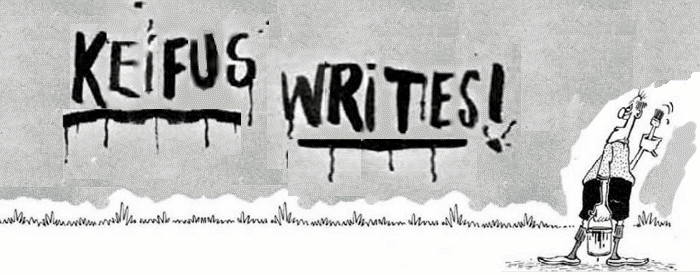Confidence Racket
No matter how complex the story, however brilliant the invention or well-played the situational ethics, every confidence scam always comes down to that same perpetual nut to crack, the razor-thin line between a fool and his money, that transitional point where on one side there's a fistful of cash in my hands, and on the other side, in someone else's. Up to that critical point, the act must go on to its tension-filled climax, the con artist has to keep a straight face to that last second, maximize the urgency, the sincerity, thank-you-thank-you-good-sir-what-a-blessing-mom-can-have-that-operation-now, a-a-a-a-and now it's his. Sucker. If there's no more to gain, the grifter can turn around and run here. If he's stumbled on a particularly lucrative mark, he'll walk away calmly, smiling, keeping up his oscar performance in the hopes of repeat business. It's what separates the con men from the con boys, I suppose.
The art of acting and invention that's esssential to the con is what keeps a warm place in our hearts for those criminals. Or at least for the movie versions--I don't imagine those bastards stalking the internet from their Nigerian redouts to be such a bunch of lovable scamps. I advocate a healthy suspicioun for anyone trying to sell you anything, but if it gets confusing, you can always try to evaluate a transaction by looking at the process flow sheet. A nasty scam will show money input from me, and nothing tangible coming back out to me. A better one will promise some sort of return, but it might be out of whack, and highly conditional on my good feelings. At some point in the scamminess continuum, the line is eventually crossed into legitimate business, where the returns are based on telling enough of the truth: real products are exchanged, or investments are based on actuarial data, or on roughly sound economics. In the real world, we don't usually get to evaluate a single enormous transaction with this yardstick, but still, it can be useful to draw a big box around the system of them and look at the ins and outs for groups of parties, which will be true regardless of the insane things churning around inside.
Look, I don't know what to make of the bailout, and maybe the blogosphere doesn't need yet another half-informed voice. There's an asset bubble under there that even I can see, and letting it get bigger, still, more, just can't be wise. It seems like reducing liquidity, at least in terms of real estate and consumer spending, is a necessary condition of healing the basic long-term problem of this nation consuming more than it produces. Less borrowing is ultimately the cure, in other words.
On the other hand, the idea of credit screeching to a halt is a deadly serious one, if it happens. I wish I could convince myself it's just a reductio ad absurdum argument, but who can tell when everybody is panicking, the LIBOR is shooting up, and smarter people than me are scared shitless? (I just read a post about how farmers typically use credit to pay for harvesting their crops. Good god.)
So I can see taking action to the extent it's necessary to keep that functioning-credit part of the system alive. I may even be convinced that a patch that keeps the existing crazy system capitalized is a good idea, provided steps are taken to assure those new funds aren't also over-leveraged and the thing blown up further. (I guess I haven't sunk to an IOZ-ian desire to watch the thing disintigrate just yet. Dissolution has as big a problem with the "how" as does, what the hell, any other ethos.) Paulson, if I understand it correctly, wants to assure this short-term credit flows by injecting money into the system to lend, assuming it's a crisis of Depression-era proportions (and not everyone agrees with that), by buying the suddenly-obvious bad loan obligations. The counterproposal that just failed in the House did so much as to dangle a little oversight and a hint of justice onto the basic package. Two alternate ideas I've seen (of many) are: (1) the Federal Reserve temporarily takes over the operations of the banks, to preserve the system of payments (which allegedly will eliminate freezing of credit by panic); (2) capital is supplied to banks by taxpayers purchasing ownership shares of the banks (rather than their shitty debt obligations). There have been a few more, probably more than a few, but I don't remember them. None are happy fixes. One supposes we taxpayers might even be better served if we offered to buy up the threatened properties themselves (at a price referenced to historic baseline growth) and hold them against inevitable population growth. As it is, under the conditions of urgency, given the history our administration has had with threats and promises, my con-job reflexes have been twitching like mad. I keep looking for the point where the money's changing hands, and to whom. Seven hundred billion is an investment in confidence, right?

